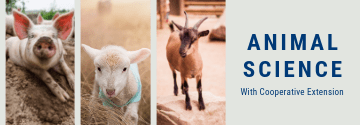After a wet fall and a frigid winter, alfalfa plants have experienced stressful conditions that may have a negative impact on yields come harvest. For some producers, insect infestations could be the final blow that puts an end to a profitable hay crop.
Typically arriving during planting season while tractors race to the fields, it is easy to put scouting for weevil damage on the back burner. However, according to Pennsylvania State University Department of Entomology, it is important to realize that unresolved weevil damage can have a significant impact on plant height, translating to yield lost. In fact, studies show that one larva in thirty 16 in. tall plants can translate to a loss of approximately 0.75 lb per acre.
Recognizing Alfalfa Weevil
The larvae of alfalfa weevils have three pairs of legs and range in size from 1/16 in. when they first hatch to 5/16 in. when they are fully grown. During development, the larvae also vary in color depending on their age. Shortly after hatching, the larvae are light yellow-green (Figure 1) but will turn a darker green after feeding on plant material (Figure 2). The distinguishing characteristics of the alfalfa weevil are its dark brown-black head capsule and prominent white stripe that is present on its back and runs the length of the body.

With conditions ripe for these pesky pests, now is the time to start scouting fields for weevil populations. Pennsylvania State Extension agents recommend using a sweep net to help reveal if weevil larvae are present in your fields. If larvae make their presence known, determining their population levels should be the next step.
To determine population levels, systematically select 30 stems from across a field, break them off gently (to avoid losing any larvae prematurely), and shake them into a bucket. If the number of larvae exceeds the numbers in Table 1, growers should consider a management tactic, such as insecticidal treatment.

For more on alfalfa management, read:


